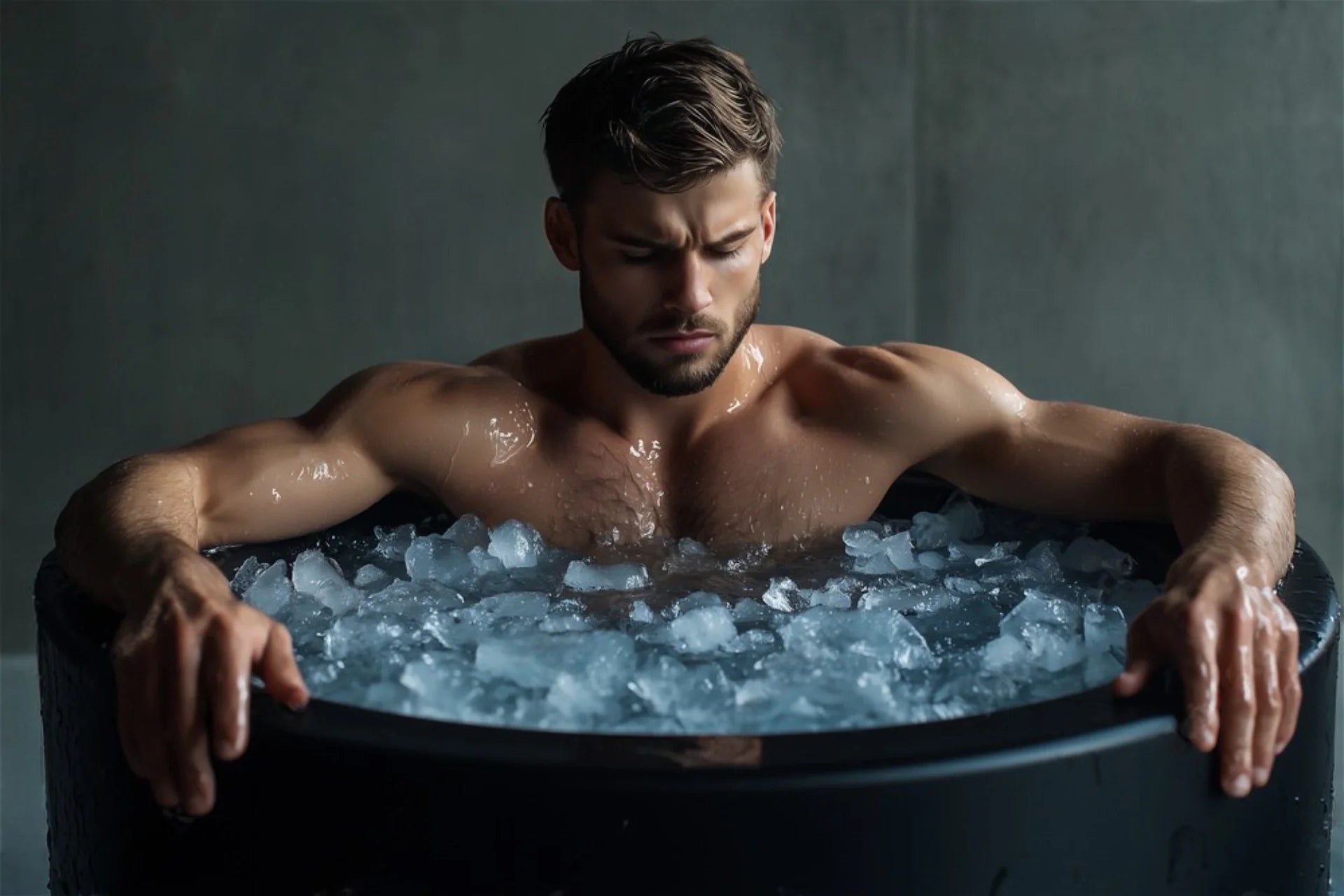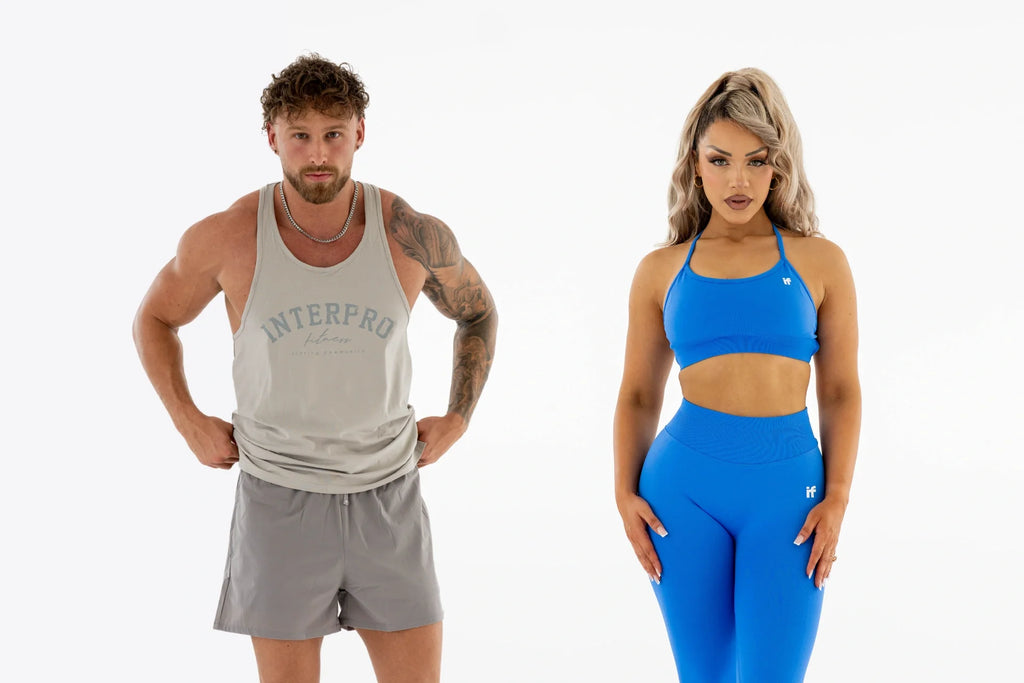The Benefits of Ice Baths, Cold Showers & Cryotherapy Explained

In recent years, cold therapy has gained significant popularity among athletes, biohackers, and wellness enthusiasts. From professional sports teams to mental health advocates, people across the world are turning to cold exposure for its powerful physical and psychological benefits. Whether you're dunking into an ice bath, ending your shower with a burst of cold water, or stepping into a cryotherapy chamber, the science behind cold therapy is both fascinating and compelling.
In this blog, we’ll explore the benefits of ice baths, benefits of cold showers, and cryotherapy, highlighting how each method can enhance your health, improve performance, and boost overall wellbeing.
What Is Cold Therapy?
Cold therapy, also known as cold exposure therapy or cryotherapy, involves exposing the body to cold temperatures for a short period. The practice can be as simple as splashing your face with icy water or as advanced as undergoing a professional whole-body cryotherapy session.
There are several ways to experience cold therapy, including:
-
Ice baths – immersing the body in cold water filled with ice.
-
Cold showers – finishing your regular shower with cold water.
-
Cryotherapy – using a specialised chamber cooled to sub-zero temperatures.
The Science Behind Cold Exposure
When your body is exposed to cold, it triggers a series of physiological responses:
-
Vasoconstriction: Blood vessels narrow to preserve core body heat.
-
Reduced inflammation: Cold slows down the metabolic rate of cells, reducing inflammation and pain.
-
Endorphin release: The brain releases feel-good chemicals like dopamine and norepinephrine.
-
Activation of brown fat: This special type of fat burns energy to generate heat, supporting weight loss and metabolism.
The Benefits of Ice Baths
1. Accelerated Muscle Recovery
One of the most well-known benefits of ice baths is their ability to speed up muscle recovery. Athletes often use ice baths after intense workouts or competitions to reduce muscle soreness and inflammation.
Cold water immersion helps flush out lactic acid, decrease swelling, and promote faster healing by constricting blood vessels and then dilating them post-bath, which improves circulation.
2. Reduced Muscle Soreness
A 2016 meta-analysis published in the Cochrane Database found that cold water immersion is effective at reducing delayed-onset muscle soreness (DOMS) within the first 96 hours after exercise.
If you're someone who lifts weights, runs, or trains regularly, ice baths can be a game-changer in reducing downtime and improving consistency.
3. Improved Sleep Quality
Emerging evidence shows that ice baths may help improve sleep by lowering core body temperature and relaxing the nervous system. Cold exposure can shift the body into a parasympathetic (rest-and-digest) state, making it easier to fall asleep and stay asleep longer.
4. Mental Toughness and Resilience
Regularly submerging yourself in freezing cold water is no small feat. It requires focus, breath control, and mental discipline. Over time, this builds psychological resilience, improves stress tolerance, and boosts self-confidence.
The Benefits of Cold Showers
Cold showers are a more accessible way to reap the benefits of cold therapy without needing ice or a dedicated setup. Let’s break down the benefits of cold showers:
1. Increased Alertness and Energy
A cold shower in the morning can provide a natural jolt of energy, activating your sympathetic nervous system and increasing oxygen intake. The result? Enhanced focus, mental clarity, and readiness to tackle the day.
2. Strengthened Immune System
Cold showers may boost immunity by increasing white blood cell count and enhancing lymphatic circulation. This helps the body remove toxins and fight infections more effectively.
A Dutch study led by Dr. Geert Buijze found that individuals who took daily cold showers reported a 29% reduction in sickness absence from work.
3. Healthier Skin and Hair
Unlike hot water, which can strip the skin and scalp of natural oils, cold water helps tighten pores, reduce inflammation, and preserve hydration. This can lead to clearer skin and shinier, healthier-looking hair.
4. Stress Reduction
Cold showers stimulate the vagus nerve, which plays a crucial role in regulating mood and emotional balance. This may help reduce symptoms of depression and anxiety when used consistently as part of a broader wellness routine.
Cryotherapy: The High-Tech Cold Therapy
Cryotherapy refers to a more advanced form of cold therapy that typically involves exposing the body to temperatures as low as -110°C to -140°C (-166°F to -220°F) for a few minutes inside a cryo chamber.
Here are some of the most notable benefits of cryotherapy:
1. Rapid Recovery and Pain Relief
Cryotherapy is often used by professional athletes to recover quickly from injuries and intense training sessions. The extreme cold can reduce inflammation, relieve joint pain, and accelerate muscle healing.
Conditions like arthritis, fibromyalgia, and chronic pain may benefit from regular cryotherapy treatments.
2. Enhanced Mood and Mental Clarity
Exposure to extreme cold triggers a surge of endorphins and norepinephrine, creating a euphoric "high" post-session. Many users report feeling more positive, focused, and energised after cryotherapy.
Some studies suggest cryotherapy may even be effective in alleviating symptoms of depression by regulating neurotransmitters.
3. Skin Rejuvenation
Whole-body cryotherapy may improve collagen production and reduce signs of aging. Some beauty clinics use local cryotherapy to treat skin conditions such as eczema, psoriasis, and acne.
4. Boosted Metabolism and Fat Loss
Cryotherapy stimulates brown fat activity, which burns calories to keep the body warm. Some users combine cryotherapy with calorie-controlled diets and exercise for accelerated fat loss.
Comparing Cold Therapy Methods: Ice Baths vs Cold Showers vs Cryotherapy
| Feature | Ice Baths | Cold Showers | Cryotherapy |
|---|---|---|---|
| Cost | Low | Free | High |
| Time Required | 10–15 min | 3–5 min | 2–3 min |
| Equipment Needed | Tub, ice | None | Cryo chamber |
| Accessibility | Moderate | High | Low |
| Effectiveness for Recovery | High | Moderate | Very High |
| Mental Resilience Training | High | High | Moderate |
| Weight Loss & Metabolism | Moderate | Moderate | High |
Each method has unique benefits, and the best approach depends on your goals, budget, and lifestyle.
Who Should Be Cautious With Cold Therapy?
While cold therapy offers many benefits, it’s not suitable for everyone. You should consult a healthcare professional before beginning cold exposure if you:
-
Have cardiovascular issues or high blood pressure.
-
Are pregnant.
-
Have Raynaud’s disease or cold sensitivity.
-
Are recovering from certain injuries or surgeries.
Always start gradually, listen to your body, and never push through intense discomfort or numbness.
How to Get Started With Cold Therapy
Here’s a beginner-friendly roadmap to help you integrate cold exposure into your routine:
Step 1: Start with Cold Showers
-
Finish your regular warm shower with 15–30 seconds of cold water.
-
Gradually increase to 2–3 minutes over several weeks.
-
Focus on calm breathing and staying relaxed.
Step 2: Progress to Ice Baths
-
Fill a bathtub with cold water and add ice until the temperature reaches 10–15°C (50–59°F).
-
Start with 2–3 minutes and work up to 10–15 minutes.
-
Use a timer and have a warm towel ready afterward.
Step 3: Try Cryotherapy (Optional)
-
Find a reputable cryotherapy centre near you.
-
Start with 1–2 sessions per week.
-
Ensure the facility follows safety protocols and has trained staff.
Final Thoughts
Cold therapy is more than just a trend—it’s a scientifically supported tool for enhancing your physical and mental health. Whether you’re looking to recover faster from workouts, reduce stress, boost your mood, or improve skin health, cold exposure offers a wide range of benefits.
From the accessible benefits of cold showers, to the athlete-approved benefits of ice baths, and the high-tech promise of cryotherapy, there’s a form of cold therapy for everyone. Consistency and gradual adaptation are key—start small, stay safe, and embrace the chill.
Frequently Asked Questions
Q: How often should I take an ice bath?
A: 2–3 times per week is sufficient for recovery and adaptation. Listen to your body and avoid overdoing it.
Q: How cold should an ice bath be?
A: Between 10°C and 15°C (50°F–59°F) is ideal for therapeutic benefit without risk of hypothermia.
Q: Are there risks to cold therapy?
A: Yes. Hypothermia, skin irritation, or circulatory issues can occur if done excessively or incorrectly. Always consult a doctor if unsure.
Ready to Take the Plunge?
Incorporating cold therapy into your lifestyle can be transformative. Start small, build gradually, and soon you may find yourself craving the cold—one chilly dip at a time.


